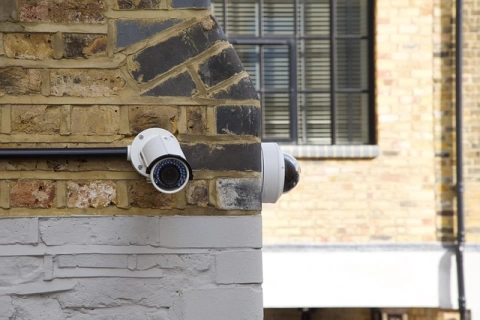A Brief Overview Of Brass Utensils
Brass is a type of metal typically used in utensils to prevent corrosion and tarnishing. Brass is often used in kitchens since it can take a variety of shapes, colors, and patterns. Brass is also relatively lightweight, making it perfect for kitchen use. Learn more about brass utensils by reading this blog article!
What are Brass Utensils?
Brass utensils are typically brass and have a higher quality than other kitchen utensils. Brass is a durable metal that is also rust-resistant, and this makes brass utensils an excellent choice for chefs who need tools that will last. Additionally, brass utensils are often considered more aesthetically pleasing than other kitchen utensils.
Types of Brass Utensils
Brass utensils come in many different shapes and sizes, making them perfect for various cooking tasks. Brass is a versatile material that can handle high temperatures without warping, from pots and pans to ladles and spoons.
Some of the most common types of brass utensils include:
- Skillets: A skillet is a versatile tool that can be used for cooking everything from eggs to steak. They are made from a single piece of metal, easy to clean and maintain.
- Dutch Ovens: Dutch ovens are similar to skillets in that they are made from a single piece of metal, but they are larger and have a more bottomless well. They are perfect for cooking large meals or braising meats.
- Pans: Pans come in all shapes and sizes to be used for just about any cooking task. They are made from various metals, including brass, so they can handle high heat without burning or sticking.
- Spoons: Spoons come in many different shapes and sizes, making them perfect for stirring batters and sauces. They are also great for transferring food to serving dishes or portioning food onto plates.
- Saucepans: These pans are a great addition to any kitchen drawer because they double as saucepans without extra space. They come in 1- and 2-quart sizes, so you can cook a big pot of soup or boil vegetables without using two pots.
- Skillets: Skillets take the place of traditional sauté pans, but they have a bottom base perfect for cooking small portions of foods (like eggs or fish). They also have excellent heat distribution since they are made from cast iron.
Benefits of Using Brass Utensils
Brass utensils are famous for a few reasons. The first reason is that brass is a durable and corrosion-resistant metal. Brass is also a non-allergenic metal, so it is safe to use for people with allergies. Brass utensils also have a classic look that fits any home décor. Finally, brass utensils are affordable and easy to clean.
What are the brass Utensils Cost.
The cost of brass utensils depends on several factors. The most crucial factor is the type of brass used. For example, manganese or nickel-plated brass utensils are more expensive than standard (non-plated) brass. Additionally, the amount of use that a set of knives sees is essential to your price for them. For example, if you have a bunch of twelve forks and six spoons but only use four and three spoons per meal, then the additional costs per week are not as high as if you had a set with twenty forks and ten spoons.
Brass Utensils Care and Maintenance
You must pay attention to some things to keep your brass utensils looking beautiful and in pristine condition. This will help prevent tarnishing, rust, and stains from forming on your knives. You can only use one type of detergent at a time, so do not mix different brands. If you use dishwasher soap, be sure to rinse the utensils before placing them in the dishwasher. Please do not leave your knives soaking in the sink for too long, as tap water's chlorine will damage them. Clean Brass Utensils with Soft Cloths and Vinegar before Storing Them. When you have finished using your set of brass utensils, then be sure to clean them off beforehand.
What is the Difference Between Different Types of Brass Utensils?
Brass utensils come in different shapes, sizes, and materials. There are different types of brass utensils, depending on their function. Here is a brief overview of each type:
- Brass spoon, Brass glass, Brass plate, Brass bowl, Brass thali, Brass kadai and Brass dinner set
- Copper alloy brass utensils are the most affordable and common type. They are often used for cooking and baking because they are strong and heat resistant.
- Tinned brass is a more expensive option but is also more robust and has a longer lifespan. It is typically used in the kitchen because it doesn't trust easily.
- Wrought iron brass is a luxurious option but is also the most expensive. It is often used for fine dining because it has a beautiful patina that can be polished to a shine.
- Nickel-free brass is made from a different metal than other brass types and is not as strong or durable. It is typically used for decorative purposes or in small quantities in the kitchen.
What are some unique features/benefits/uses for specific types of brass utensils?
Brass utensils can be used for various tasks, including cooking and baking. They're particularly well-suited for sauces and gravies because they retain heat well. Additionally, brass utensils are durable and can last for years without tarnishing or breaking. However, if you don't want to invest in a set of brass utensils, it's still possible to buy individual pieces.
Are there any drawbacks to using brass utensils?
Brass is considered an expensive metal to purchase. Therefore, some people may consider buying an entire set of knives rather than purchasing them individually. Additionally, their beauty and durability could be factors that contribute to price variation. If you prefer stainless steel or aluminum, you'll likely find better deals on those materials.
Conclusion
Brass utensils are a great addition to any kitchen and can be used for various tasks. They are easy to clean and maintain, making them a popular choice for those who want to avoid using potentially hazardous materials in the kitchen. If you're looking for an affordable option that will provide years of service, brass utensils may be perfect.















Send Query